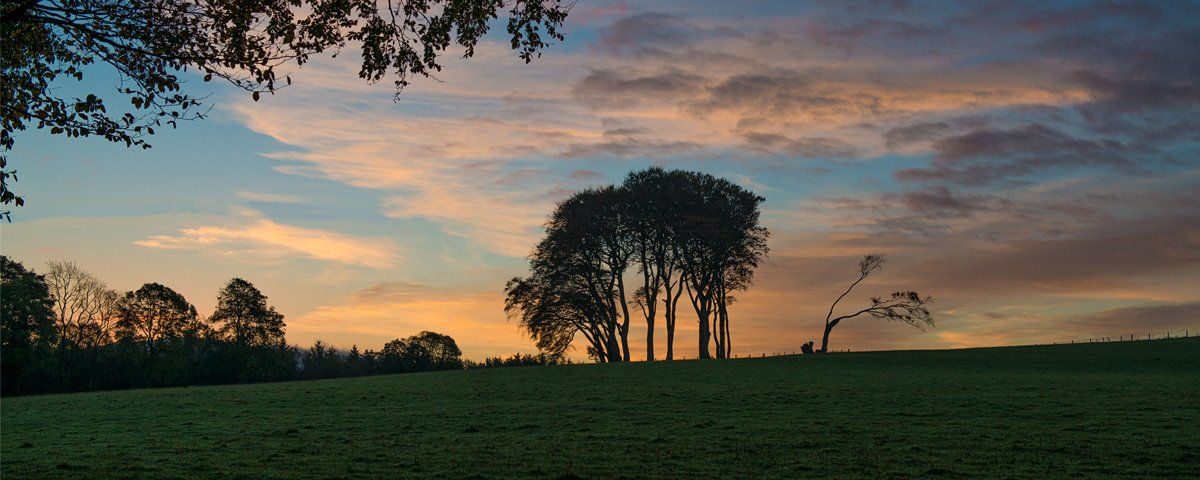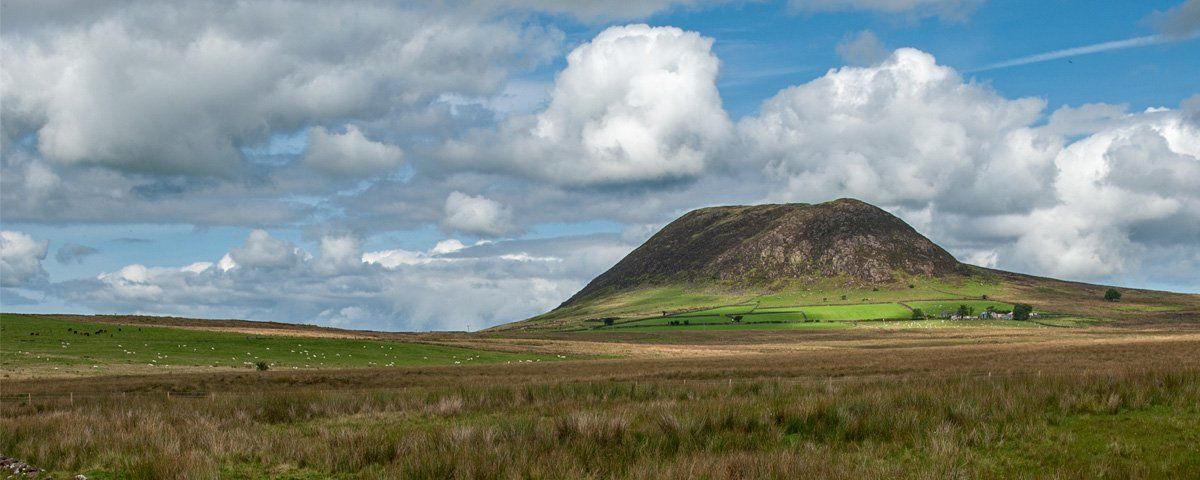Glenarm / Glencloy Scenic Route
Length of Drive
23 miles / 37 kilometers
23 miles / 37 kilometers
38 miles / 61 kilometers (includes Slemish)
Route Description
Route Description
This is two glen experience (Glenarm and Glencloy) on good two way (lined) 'B' roads. If you go to Slemish mountain which is optional then you will add 15 miles to the drive and encounter single lane roads (passable), again two way in places but unlined. The road is generally good for most of the length with some windy sections and several junctions before you reach Slemish mountain. To go there, at the top of either glen follow the signs for Slemish and Buckna. If you take the route you will loose 4 miles of the Causeway Coastal Route between Waterfoot and Carnlough.
Both entrance/exit points start at sea level, the Glenarm Scenic Route winds its way up from the village, there are stopping places where you can enjoy views over Glenarm Castle demesne to Scotland, the castle itself is the clan seat of the Macdonnell's. The road opens out at the top of the plateau where it joins the Glencloy Scenic Route. At this junction, on your left, you will see the sign for Slemish and Buckna, the detour to take for Slemish. The unique shape of Slemish reveals its geological past, a remnant of volcano activity and one of several vents that poured out vast quantities of lava 60 million years ago during the Paleogene period (Lower Tertiary), which incidentally, created the Giant's Causeway.
After the final eruption, the vents slowly solidified and millions of years of erosion followed including several ice-ages, these moved gigantic erratics for hundreds of miles. The solidified dolerite vent of Slemish was part of a volcanic plug either formed in situ or carried here by an ice flow. The views from the top of Slemish are wonderful, a steep rough path from the car park takes you to the top (437 metre high /1430 feet). A wonderful spot on a clear summer day with panoramic views over the Braid Valley, Sperrins, Belfast Hills and Scotland. This is the area where Patricius (Saint Patrick) was brought after being sold as a slave to Milchu, a local chieftain. At the time, raids were taking place from Ireland to the coastal areas of Scotland, England and Wales, when slave trading was common practice.
Many believe the raiding party came from the Sconce above Articlave (on the Causeway Coastal Route between Coleraine and Downhill), a strategic fort and power base, any slaves captured in the raids would have been brought back here before being sold on. The Sconce at Articlave is associated with Niall of the Nine Hostages. In later life Patrick wrote the ‘Confessio’ which tells of his experiences in Ireland, in it, he writes: I, Patrick, a sinner, a most simple countryman, the least of all the faithful and most contemptible to many, had for father the deacon Calpurnius, son of the late Potitus, a priest, of the settlement [vicus] of Bannavem Taburniae; he had a small villa nearby where I was taken captive.
I was at that time about sixteen years of age. I did not, indeed, know the true God; and I was taken into captivity in Ireland with many thousands of people…..’ He worked as a herdsman during the six years through which he endured many hardships but also found his spiritual calling and faith. At this time the area would have been forested with the peak of Slemish rising above it. He writes… ’ after I reached Ireland I used to pasture the flock each day and I used to pray many times a day. More and more did the love of God, and my fear of him and faith increase, and my spirit was moved so that in a day [I said] from one up to a hundred prayers, and in the night a like number; besides I used to stay out in the forests and on the mountain and I would wake up before daylight to pray in the snow, in icy coldness, in rain, and I used to feel neither ill nor any slothfulness, because, as I now see, the Spirit was burning in me at that time.’
He escaped after hearing a voice in a dream. He writes: 'And it was there of course that one night in my sleep I heard a voice saying to me: 'You do well to fast: soon you will depart for your home country.' And again, a very short time later, there was a voice prophesying: 'Behold, your ship is ready.' And it was not close by, but, as it happened, two hundred miles away, where I had never been nor knew any person. And shortly thereafter I turned about and fled from the man with whom I had been for six years, and I came, by the power of God who directed my route to advantage (and I was afraid o nothing), until I reached that ship. He eventually made it back to his family in England and from there went to study in Northern France, he returned to Ireland after another prophetic dream.
On returning he went to his old master Milchu whom he converted to Christianity. Across the valley from Slemish on a rocky outcrop, you can find the ruins of Skerry Church, believed to have been founded by Patrick when he returned to Ireland and converted his old master Milchu to Christianity. Google Map Ref: https://goo.gl/maps/Z99p5 (To explore this area and visit Skerry Church you will need to go off the designated route. Use the google map reference above and look for the Loughloughan Road.) The ruins you find today date to circa 1500 with some parts going back to circa 1300. It is widely believed that this was the site of an earlier Christian settlement founded by Patrick.
It is said that while enslaved here he had a vision of an angel ascending from a hilltop which is believed to have been the Hill of Skerry. Milchu gave him the land where the church was built, today this is where Skerry Church is sited. A stone with a footprint indented in it is said to be that of the archangel Gabriel who appeared to Patrick before he escaped his servitude. Patrick also advised and converted Fergus the son of the king of Dalriada who gave him land at Armoy on which the monastic settlement of Armoy was built, Fergus became the first Christian king in Ireland. Around North Antrim, you will find lots of links to Patrick and his followers like St. Gobain (Glenshesk) and St Olcan (Armoy).
Slemish Mountain is also where Henry Joy McCracken and a few others United Irishmen hid out from government soldiers after their defeat at the Battle of Antrim in June, 1798. After evading troops they made their way across the Antrim Plateau and took shelter in a safe house near Greenisland while friends arranged money and a boat to take them to Scotland. As they made their way along the shore road two soldiers recognised Henry Joy and they were arrested and taken to Carrickfergus. Henry Joy who was commander of the Ulster Army at Antrim was then taken to Belfast, found guilty and hanged at the Cornmarket.








